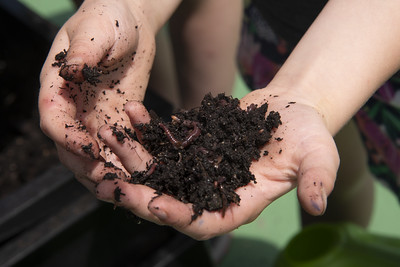What's in Soil?
Students identify the components of soil and demonstrate that soil contains air and water.
Students identify the components of soil and demonstrate that soil contains air and water.
Students observe soil changes in relationship to depth and identify factors associated with soil formation.
Students observe the change of water states as it moves through the water cycle.
Students examine the basic geography of a watershed, how water flows through the system, and how people can impact the quality of our water.

Students create a worm bin which will serve as a basis for investigations about ecosystems, life and nutrient cycles, and decomposition.
Students observe how plants respond to gravity by germinating soybeans in a CD case and rotating the case as they grow.
Students determine the importance and complexity of the Earth’s soil.
Students recognize their relationship to soil and model the connections between common objects and the soil.
Students observe and explain the decomposition process and identify the methods and ingredients for making compost.
Students observe the interactions between living plants and other living and nonliving things in a small terrarium environment and discuss similarities between the terrarium environment and the farm environment.
Students explore a variety of vegetables that can be stored through the colder months, including roots, alliums, cole crops, and winter squash and compare and contrast how families store food now with how they stored food long ago.
Students determine the water holding and draining capacities of different soils and investigate how organic matter affects the amount of water soil will hold.